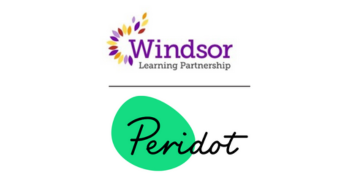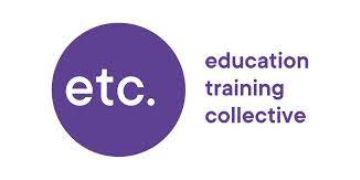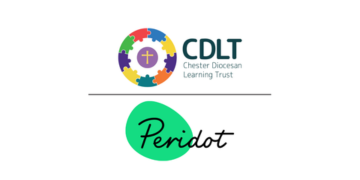When I was appointed CEO in 2021, the most pressing issue I wanted to address was consistency.
As a headteacher, you want consistency in every classroom. As a trust leader, you want consistency across your schools.
I wanted to create the conditions so every school had the same opportunity to be great.
The inequity issue
It quickly became clear that funding would often get in the way of this. In some schools, heads were acting as site managers because the budget would not stretch.
In others, children enjoyed weekly onsite speech and language therapists and specialist music teachers. These are obviously great things, but less so when they are available to some children and not others.
This inequity made me deeply uncomfortable and determined to do something about it. But before spreadsheets, we needed to shift culture.
Agency, not autonomy
We had to uproot a very real mindset of “my school” to “our schools and our trust”. Some of this was about language. The word ‘autonomy’ has been bandied about in our sector for many a year, but in reality, the governance of a MAT and current funding arrangements do not give true autonomy.
So instead, we started to talk about ‘agency’. Agency to shape the experience of children within a shared framework and shared resources. We started using that word deliberately so that our language matched reality.
We then took people on a journey. Being part of a MAT is not like belonging to the AA – ie, when things go wrong you give them a call. It’s a fundamental change in identity in belonging to an organisation where you’re saying your heart lies with children beyond the reach of your own school gate.
Before spreadsheets, we needed to shift culture
So I drew inspiration from former national schools commissioner Sir David Carter, who talks passionately about great trusts as places where you care deeply about children you will never meet.
If you hold that thought and truly believe in it, then pooling GAG becomes an ethical conversation as much as a financial one.
The GAG pooling conversation
Once the culture work was underway, we moved to financial modelling through three lenses: my school, our schools, and our trust.
In the “my school” category we protected the lines that would not be pooled. Pupil premium, SEND, English as an Additional Language and specialist resource provision funding stayed with the school. This served two purposes: it respected targeted funding and reassured leaders that the most vulnerable pupils would not lose out.
In the “our schools” category, we set common entitlements for staffing that spoke to what we value. For example, every designated safeguarding lead must have protected non-contact time, and no head should carry the DSL role.
Every SENDCo must have a minimum of two days out of class, more in larger schools. (As an aside, since introducing these minimums we have seen a significant improvement in the retention of our SENDCos).
Finally, in the “our trust” category, any surplus remaining after those first two stages would be pooled for strategic priorities. We allocate money to the things we value. For us that means our enrichment programme (11 before 11), reading, staff development and capital investment in technology where it is needed most.
How it went wrong
On paper, it was a solid plan. In practice, we did not get it quite right.
As much as we had focused on culture and as much as we had scrutinised the numbers, we hadn’t done enough and as a result, hadn’t taken everyone with us.
What didn’t help was the fact that when heads initially worked through their GAG pooled budgets in 2024, this was happening at precisely the same time that education funding was being hit more widely.
Balancing budgets looked like an impossible task, which many heads assumed was because of pooling GAG, rather than the reality which was because of the wider factors at play.
And lastly, our chief finance officer also retired in the middle of the process and, in hindsight, not having an executive leader in place throughout the whole process created a real challenge.
And so ultimately, we decided to pause rather than press ahead regardless. When we told heads, they erupted into applause.
How we’re getting it right
That was hard, but it was the right call. We went back out to leaders, local governing bodies and finance teams. We worked forensically line by line and item by item. We tested the model to destruction and rebuilt it with the feedback.
We have now reset the timetable.
Has this been challenging? Unquestionably – quite possibly the hardest chapter of my career
Pooling GAG will be introduced for September 2026. We will set budgets in the spring on that basis, and we will continue the engagement work through this year so there are no surprises and everyone fully understands the what, why and how.
Has this been challenging? Unquestionably – quite possibly the hardest chapter of my career. Would I do it again? Yes.
I go back to the reason we started. The stark inequity in funding and opportunity between schools in the same trust is not something a CEO can watch play out.
Our job is to create fairness and consistency for children, wherever they sit on a map, and I take that responsibility extremely seriously.
The three key lessons
What advice would I pass on to another trust about to start this journey? Three lessons stand out.
First, culture is absolutely everything. Keep the passion that drives “my school”, but broaden it to include children you will never meet. This takes time.
Use workshops, working groups, small meetings and town halls – every possible way of engaging, you need to deploy and deploy again and again. You cannot over communicate.
Second, build a deep, shared understanding of what and why before you go near the how. Agree the principles as a leadership team and with local governing bodies. If people buy the purpose, the numbers discussion is simpler.
Third, the devil is in the detail. Decide, line by line, what is in and what is out, and be transparent. Share your assumptions, invite challenge, refine. And then share again.
Pooling GAG is not a quick fix. It is serious, values-driven work that can bring real equity to children’s lives.
You cannot model or scenario plan it too much, and you cannot engage too much either.
But if you get the culture right and the detail right, the mechanics will follow.












Your thoughts